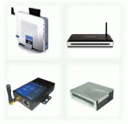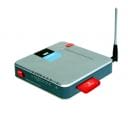Digital Signage is starting to appear in many mobile applications such as Taxi’s, Buses, Trains, Trams, Cars or any moving unit to display information and advertising material to passengers. As we all know, in order to remotely update content to the digital signage players we generally have these connected to the Internet. For those of you who are not technically savvy you may be asking yourself “How do I connect the digital signage player to the Internet whilst the vehicle is moving?”.
With the advancement of technology, this is possible by using mobile communications technology such as 3G or 3.5G. Your mobile phone is probably using 3G. Basically, 3G is the third generation of mobile phone standards and technology. It uses cellular telephone networks which provide high-speed Internet access. For more information about the 3G technology visit wikipedia http://en.wikipedia.org/wiki/3G
In Australia, there are several Telecommunications companies (Telstra, Optus, Vodafone and Three) which are selling 3G modems. There are different types of 3G modem available on the market and you need to ensure you purchase a product that is compatible with your digital signage player.
In summary, the different types of 3G modems available in Australia are:
3G Broadband USB
These generally are very simple to configure and install. However, you will need a digital signage player that has a USB port and supports the proprietary software that comes with the modem (Windows OS).
Product examples:
3G Broadband PCMCIA
These are mainly used in laptops which support PCMCIA cards or in 3G Broadband routers. Most digital signage players do not have PCMCIA slots so you wouldn’t generally purchase these unless you intend to use it in a 3G Broadband router.
Product examples:
3G Broadband Routers
This is a special router which allows you to insert a 3G PCMICA card or a 3G sim card (same as a mobile sim card but is enabled with 3G) and share the Internet connection with multiple computers and laptops via a cable or wireless. With this device, multiple digital signage players are able to be connected to the Internet and if your digital signage player supports wireless (which most of them currently do), you will eliminate the need to install network cables and hence reduce the total cost of the digital signage project.
Product examples:
Depending on the digital signage solution, you will need to purchase the most suitable 3G product available and we suggest you keep the following points in mind:
- a monthly subscription plan needs to be purchased along with the product. Just ensure you subscribe to a data plan that meets your content and data usage. Low data plans can generally end up being more expensive in the long run. So work out how much download (content) will be distributed to the digital signage players and then determine which data plan meets the your content requirements.
- there are several telecommunication companies which offer free modems depending on which plan is purchased. Keep an eye out for these.
- like with everything else you purchase, read the fine print.
Three is offering the following special, which includes a free usb modem:
For more information about any of the above 3G products and broadband price plans, visit one of the following websites:
- Vodafone
- Optus
- Three
- Telstra
Now if you prefer to purchase an all-in-one digital signage product with a built in cellular network connection there is one company that I’m only aware of that supports this – Media Tile.
To discuss more about this technology or to introduce your business to the online digital signage community visit our forum here.












